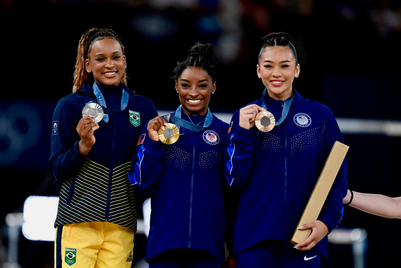Campaign Asia-Pacific caught up with Glover just before the recent Rugby 7s tournament in Hong Kong in the sponsor tent—really more of a pop-up city—for key sponsor HSBC. (We apologize for the background music in the video clip, which was provided by engineers testing the tents' sound systems.)
|
Chime Sports Marketing, part of a larger company called Chime Communications, has business units that provide sports-related consulting, rights sales and athlete representation, branding and experiential marketing, and major events and hospitality.
The company has worked with HSBC since 2009, when HSBC became a sponsor for the British Lions Tour in 2009. The rugby engagement provides a good example of how Chime works and the opportunities sports sponsorships can offer to a brand, Glover said.
"We came in, analyzed the opportunity, negotiated the contract, and then we put what we negotiated into play, and then researched whether that was good or bad for the client," he said. The most important part of the process is understanding the client's objectives at the outset.
With the Lions Tour, HSBC wanted to provide business-to-business hospitality, of course, but more importantly wanted to differentiate itself from other large financial institutions. So Chime advised and then implemented a strategy involving corporate social responsibility and community involvement.
"They invested a lot in grassroots rugby in the UK and South Africa, which gave them a point of difference," Glover said. "No one was funding coaching or communities." In South Africa, for example, HSBC helped fund an all-weather pitch near Soweto, which is still in use.
That kind of activity shows how marketers are becoming much more sophisticated about what they expect to gain from sports-related initiatives. "We've seen a big change in what we’re being asked to do by clients," Glover said. "Maybe six years ago, it was really just branding and making sure people got tickets and were entertained. Nowadays, there is a far more rigid and robust planning process that we go through with our clients, in order to tick all the boxes across the communication spectrum."
That includes social-media efforts, which were unheard of a few years ago but are now a critical part of every engagement. Glover pointed to HSBC's entertaining TVC for the 7s, which gained a viral following globally.
Sports and social media go together well because the experience of sport is inherently emotional and personal, and social media is all about one-to-one marketing. "That's why it's such a powerful thing, because were talking with them and making deeper connections through sports, and it's the rise of technology that's helping that," Glover said. (For more on social media and the 7s, please see "Measuring Twitter activity around Hong Kong's Rugby 7s".)
Meanwhile, those responsible for the governance of the sports themselves also have a role to play in making their offerings work for brands. "Rightsholders have to understand that it's not just the sport itself—although the sport and its integrity are absolutely vital," Glover said. "It's also the entertainment that goes around that sport, the experience that the fans get."
Organisations that find ways to augment the games by giving fans a little more to enjoy will be the most successful. And if they don't do that, other sports will come along and take away marketshare. He cites football as a sport that, although it is and will remain very popular, hasn't quite figured out how to do that, and will face stiff competition from home-grown sports that are more popular in Asia.
Glover credited the power of the Olympic games to drive new sports into the popular consciousness and, by extension, brand marketing plans. For example, seven-a-side rugby will be played in 2016 in Rio, which means the sport is suddenly a showcase for governments to try to win medals. The teams they field will bring the hopes of their citizens along for the ride.
But brands also must look beyond team sports, Glover said. Mass-participation sports often deliver stronger opportunities for community involvement and corporate responsibility than commercial team sports, he said, citing cycling as one that he believes will become a big force in the region.


.jpg&h=334&w=500&q=100&v=20250320&c=1)
.jpg&h=334&w=500&q=100&v=20250320&c=1)
.jpg&h=334&w=500&q=100&v=20250320&c=1)




.png&h=334&w=500&q=100&v=20250320&c=1)








.png&h=268&w=401&q=100&v=20250320&c=1)
